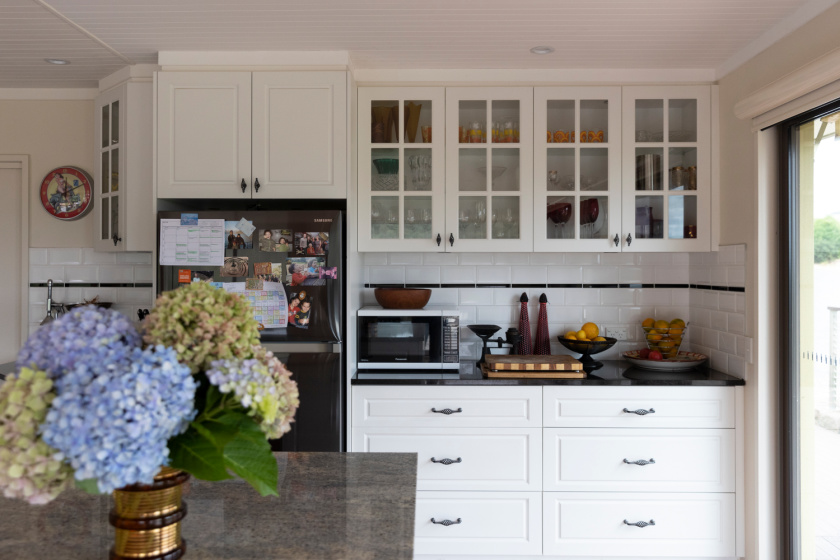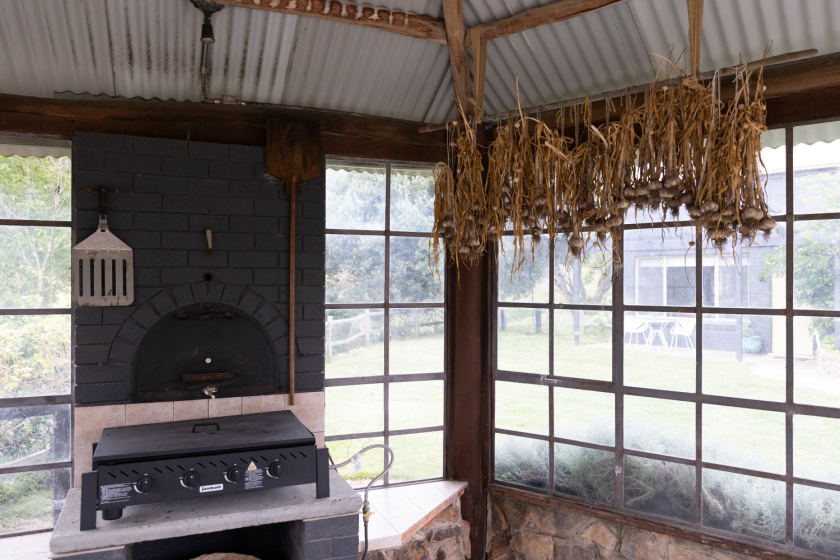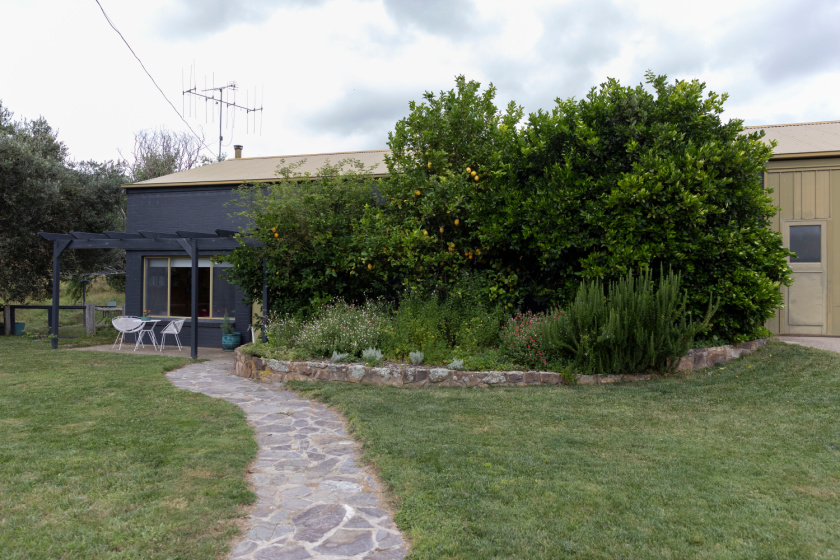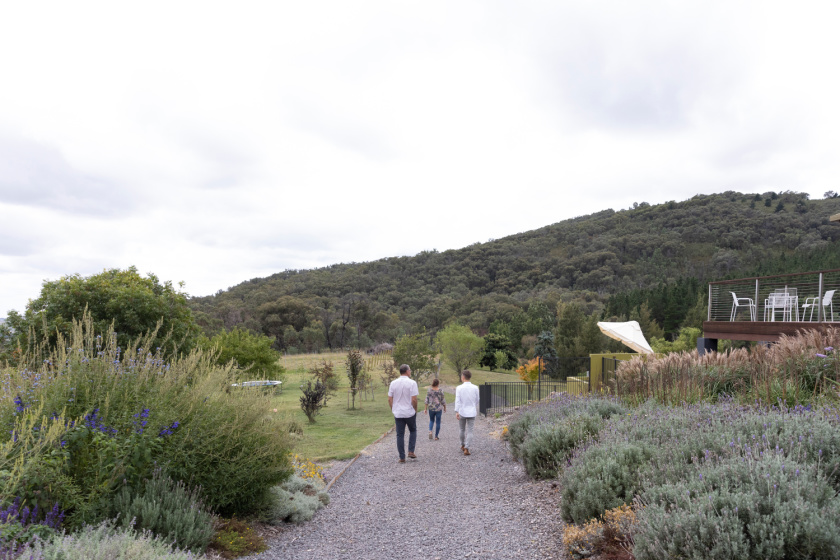Ashley Feraude, Home Stories: Mathew Trinca and Mel Jamieson, Her Canberra, 25 March 2022
In today’s edition of Home Stories, we visit the stunning rural property that National Museum of Australia Director Mathew Trinca shares with stylist wife Mel and their family.
I’m going to level with you, I reached out to Dr Mathew Trinca for a Home Stories visit a few months ago for an entirely selfish reason. I certainly wanted to bring you an exciting editorial with beautiful pictures that explored what living on a rural property close to Canberra is like; however, I was also keen to test a theory.
My theory was that a leading figure like the Director of the National Museum of Australia would have to live in a mighty interesting home full of items of historical, cultural and artistic worth. So, with that hypothesis in mind, photographer Cass and I set out on a country adventure to meet Mat and his wife Mel.
Mat and Mel’s property is set along a road linking Canberra and Wee Jasper and boasts views of rolling hills lined with pine trees, a little lake, a small vineyard, a long stretch of olive trees, a home, a shed with a studio and a classic gate with a ‘no shooting’ sign on it. I mention the sign because it really confused Cass. After all, that’s what she was here to do. We ignored the sign and decided to shoot photos anyway, and just as well, because there was plenty to see.
When the couple met us at the second gate, we realised Mel and I had met previously when she bought an artwork from me for the styling business she used to own. So not only were we visiting the home of the head of a national institution but also that of a mid-century styling expert. My research just got supersized.
Before we made it into the house, it was clear that this was not your average house in wild bushland, but rather a sprawling country home surrounded by idyllic gardens. The lawn was trimmed, flowers blooming, garlic drying in the gazebo, vines popping with grapes, and olive trees swaying in rows with a hammock stretched in between. Luckily, however, it lacked the pretentions of a massive estate that only those with stables and country club memberships could enter. This home welcomed everyone with nature’s open arms.

Interestingly, Mat and Mel do everything themselves and work hard to keep the property to this standard. They admitted that it is more work than they expected but they enjoy the challenge more than they expected, too. They were also quite realistic about what they were getting themselves into, as Mat spent his younger years on a working property in Western Australia while Mel had similar experiences living on the Mornington Peninsula.
Both felt a longing to return to the country, and when an opportunity arose to purchase this property in 2017, they quickly sold up, grabbed their two young children, Julia and Domenic, as well as the two woolly dogs and set up a new life—all without losing the connection to Canberra.

The home was originally built by a German immigrant in the 1980s who clearly had issues with relaxation. Aside from the roomy five-bedroom house, he built the sturdiest double brick shed and studio, a stone bridge over the lake, retaining wall along a gully, lined paths with stonework and planted 12,000 pine trees a year. The touching thing is that he knew a lot of his work would be enjoyed by future generations—like me, taking in the alpine vista he first enjoyed 40 years ago, through the window of Mat and Mel’s living space.
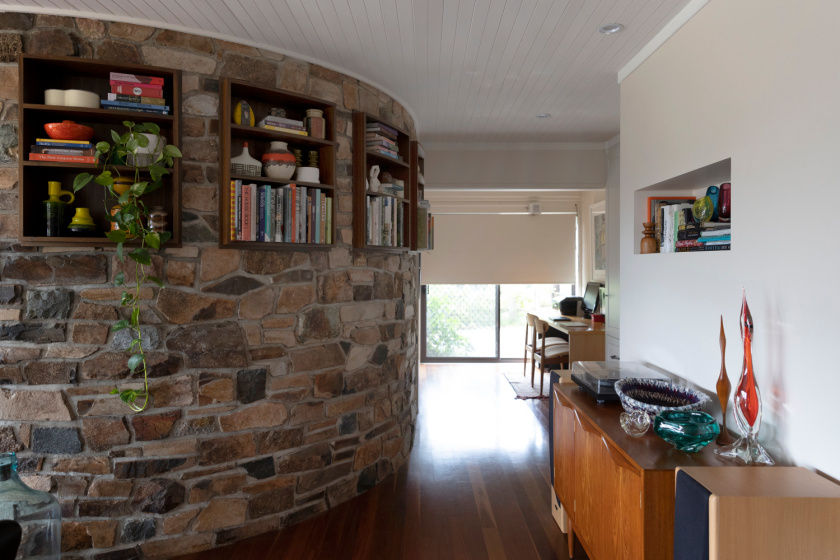
Inside the house, Mat explained that the couple have been expanding on what the home’s builder started, refurbishing parts of the house to keep it in good stead, without losing any of the original appeal. Mel, who knows more than a thing or two about Mid-Century furniture, clearly appreciates the value of items that have history, craftsmanship and style intertwined and this is reflected in the living, dining and bedroom areas—all full of stunning pieces that are just as much a pleasure to see as they are to use.
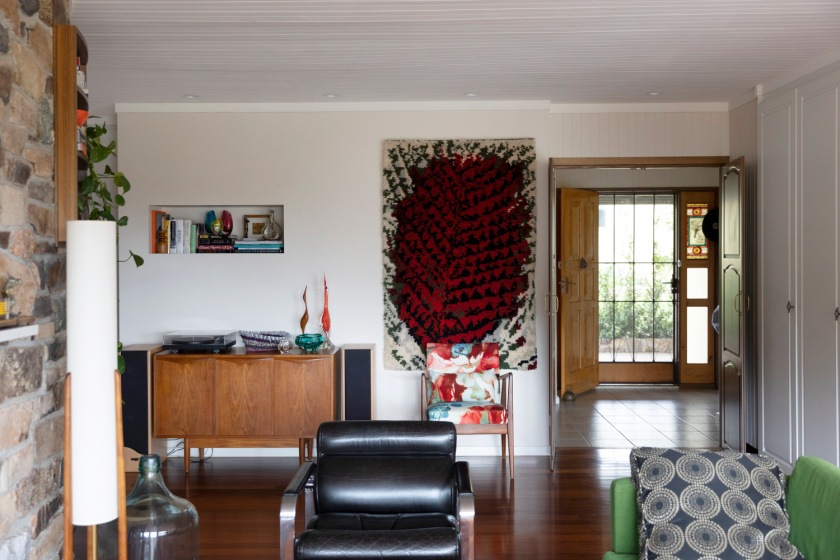
As Mat poured us an espresso, his love of history began to shine through and we got into a long conversation about the origin of the kitchen dining tables which were army surplus items that used parachutes as the seat webbing. Time went past very quickly as we discussed everything from the significance of art and culture to that time an ambassador visiting the property pointed out that the mixture of Italian olive trees, German pine trees and native bush was a lovely reflection of Australia’s cultural inclusion.

By the time we walked back to the gate to say our goodbyes, I knew my research was over and the hypothesis proven. It is exceptionally likely that the life of very interesting people is reflected in their homes. Not only in terms of the physical objects, but also within the conversations and thoughts they fill their home with.
While I was having this moment of realisation, there was a break in conversation and I noticed how peaceful the countryside was. That bliss was quickly broken by the sound of Cass’ camera shutter and I immediately responded. “Cass—didn’t you see the sign on the gate? It said no shooting!”



